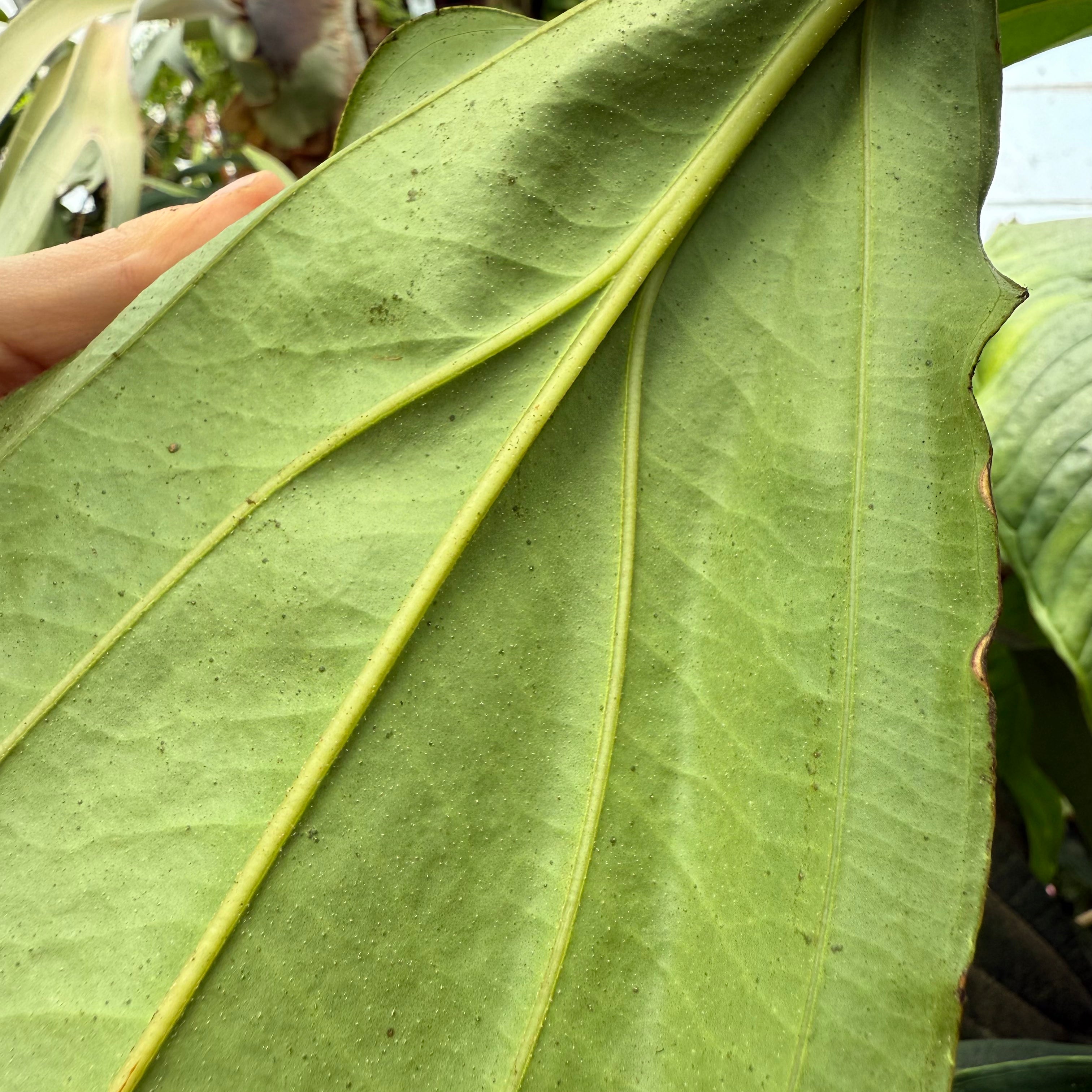Overview
Sooty molds are not harmful and, in fact, are a natural occurring phenomena found on certain plant varieties. Airborne molds colonize on plant sugars and create black patches often confused with leaf pathogens. Little white beads are excreted on the backsides of the leaves and stems. The white beads have a high sugar content and make room for opportunistic molds to colonize; this turns the white beads to black beads. Let us assure you, the beads that we are talking about are not symptoms of bugs or plant diseases. Believe it or not, the molds are harmless.
Symptoms of Plant Exudates
Plant sugars or exudates look like little white or black beads. They can also look like droplets of clear liquid surrounded by black pathces.
How the Mold Forms
Some plants are more susceptible to molds such as Piper betel, Clerodendrum speciosissimum, Medinillas, Malvaviscus arborescens, Thunbergia laurifolia and Pavonia multiflora. Plants such as Clerodendrums have glands on the back of the midrib of the leaves where sugars are excreted in tiny patches as droplets of clear liquid. Harmless sooty molds colonize on the sugars, thrive and turn black.
How to Identify the Mold
Use a magnifier to see if there is evidence of adult insects. Do not be confused by the exudates that look like insect eggs. Clear white dots and honey dew often seen in heavy infestations of scale, aphids and mealy bugs must have an adult insect for proper identification, else consider it the sugars. Once black appears, you can be assured sooty mold is afoot.
Should I Treat the Mold?
You don't need to get rid of the mold. It is a normal occurrence. The molds may look awful but the good news is all the activity appears on the backside of the leaves. Remember the plants are not harmed from having these opportunistic molds.
Commonly Confused Problems
Other than a pest infestation, edema can cause similar, though not identical, symptoms to sooty mold. Edema is a physiological disorder that occurs when plant cells take up more water than they can release, leading to blisters or corky growths on leaves. In some cases, this shows up as white, hair-like growths that can later turn dark or black, which may be mistaken for sooty mold.
Sugar Excretions or Exudates on the Piper Betel

Sooty Mold on a Clerodendrum Speciosissium


